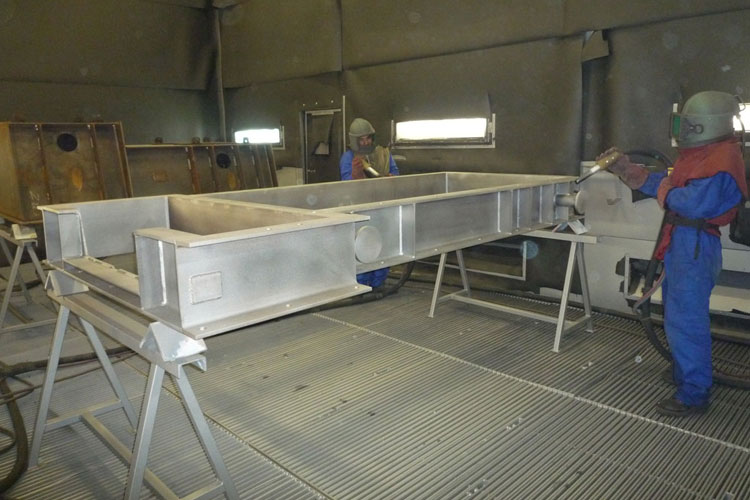Abrasive blasting with sands containing crystalline silica can cause serious or fatal respiratory disease.
Abrasive blasting involves forcefully projecting a stream of abrasive particles onto a surface, usually with compressed air. Because silica sand is commonly used in this process, workers who perform abrasive blasting are often known as sandblasters. Tasks performed by sandblasters include the following:
- Cleaning sand and irregularities from foundry castings
- Cleaning and removing paint from ship hulls, stone buildings, metal bridges, and other metal surfaces
- Finishing tombstones, etching or frosting glass, and performing certain artistic endeavors.
Many workers are exposed to the hazards of sand blasting without adequate protection. Even if all sandblasting equipment is properly designed and regularly inspected, users must always be alert to the hazards of these operations and take precautions against harmful exposures.
Airborne dust: This is one of the most serious hazards associated with blasting operations. Dust particles, considered "nuisance" dust, are normally filtered out in the nose and throat. Smaller particles (10 microns or smaller) can bypass the lung's filtering system and penetrate deep into the respiratory system, where they may cause serious damage. Safeguards are needed when smaller particles are present in the working environment.
Metal dust, in addition to the abrasive being used, contributes to the generation of airborne dust. Metals such as lead, cadmium, and manganese, can be extremely toxic when inhaled. Many existing paints have a lead base.
Suggested Industrial Vacuums for Recovery of Toxic & Combustible Dust
PrestiVac HEPAPlus* Vacuums are specifically designed to safely vacuum toxic dusts. Equipped with a Certified Absolute HEPAPlus*filter with an efficiency of 99.995% on 0.2 micron so there is no risk of exposure or contamination for the operator or the environment. These vacuums are tested for absolute filtration. Testing Method: IEST RP-CC034.3. H14. MIL-STD 282 / A.S.T.M. - D2986-91. MPPS method EN 1822.
Which Industries are at Risk with Sandblasting?













